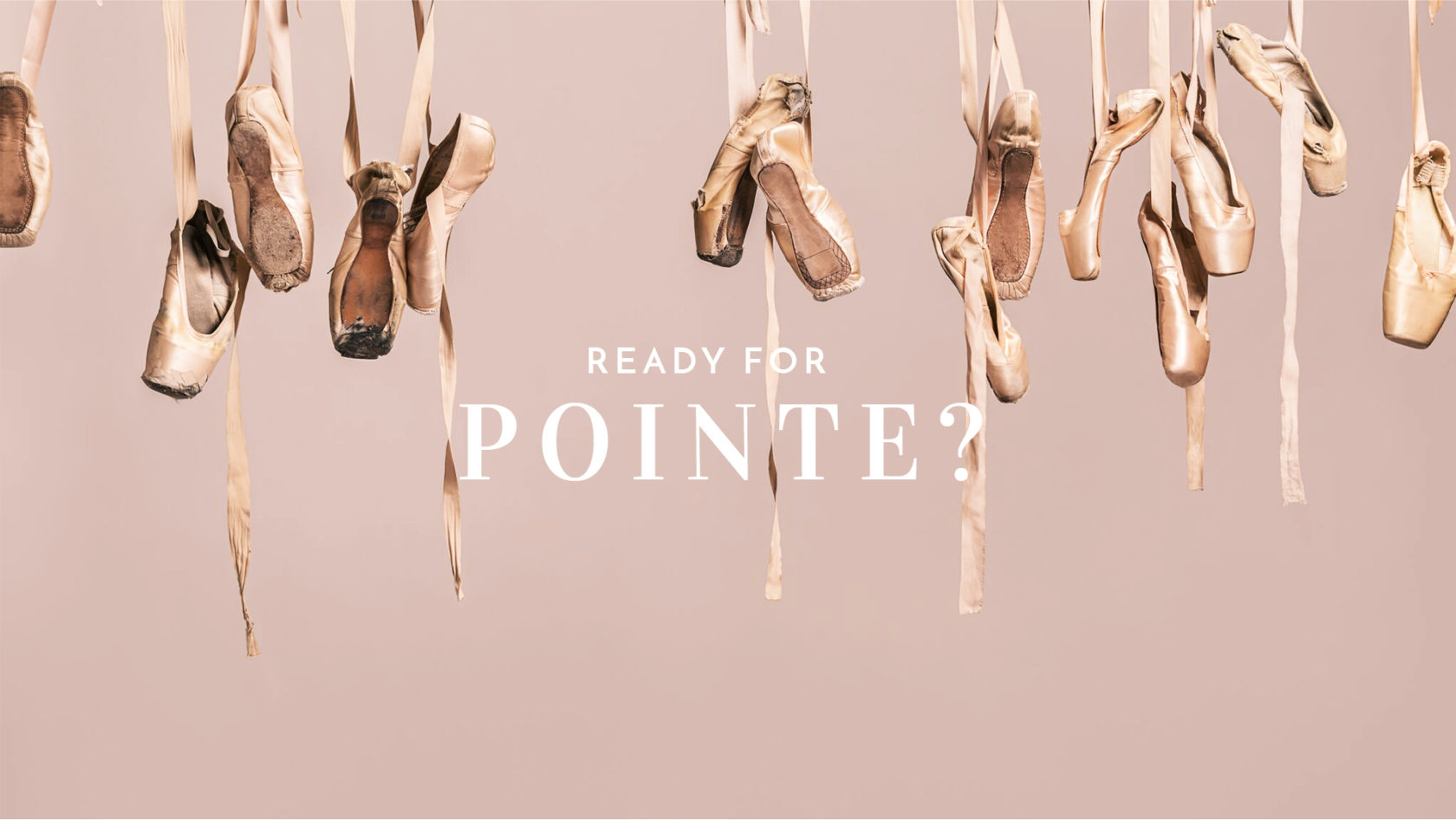When will I be ready for pointe?
It’s a question ballet teachers hear often. Especially if you teach in a school that doesn’t have clear policies in place regarding this topic. But even with clear policies we still encounter this question because parents and students will need the policies explained to them in a way they can understand.
And this is only right. Moving into pointe work is an investment, in many ways, for all the people involved; from the parent, to the student, to the teacher. Each person has their role to fill and must be committed to it fully. Unfortunately, it can be difficult to help parents and students grasp how large the commitment is until they are being swallowed by it. And by that point we have moved into reactive mode when we all know proactive is far superior (and safer).
So then, how can we define pointe readiness? And how can we take the necessary measures to ensure our students and their parents will have a safe and informed experience navigating the world of pointe training?
1. Discuss Pointe from the Very Start.
Tiny dancers (even tiny male dancers) are fascinated by pointe shoes. And why would they not be? Pointe shoes are totally amazing. Young dancers need to understand that pointe work is something we work towards, and is not a prize we automatically win once we reach a certain age or level. Let them look at pointe shoes and see how intricately the shoe is made. Explain how dancers stand on their toes and how the shoe supports them. Talk about what a dancer needs to achieve in order to reach the pointe work milestone. Starting this education early will foster the needed respect for pointe training and the work that goes into finally being placed on pointe.
2. Show the Link from Technique to Pointe BEFORE Pointe.
As the students move from a pre-ballet setting to more structured classes, help them connect how proper technique will aid them in their future pointe work. Teach them how using the foot consistently will keep them safe in pointe shoes. Tell them pointe is not an option until certain technical concepts have been fully implemented into their dancing. Continue educating them on the focused work needed to finally get pointe shoes, so that when they do come around and ask if they are ready, they will understand your answer.
3. Insist on a Pre-Pointe Course.
There is so much information a dancer needs before pointe work is safe and this information needs to be given to students in a class specifically targeted at helping them prepare for pointe. By sectioning out this special time, the students will see you are serious about this information and will therefore take it seriously as well. It is important they realize there is more to pointe readiness than strengthening the ankles. Detail out anatomy, explain healthy eating habits, drill them on the parts of the pointe shoe, teach them how to sew, build their core strength. Design a pre-pointe class that truly educates them. If they are able to pass this course they will have proven their dedication and ability to take responsibility.
4. YOU Decide When They Are Ready.
No one else. Apply yourself to continuing education so you stay up to date on the latest studies involving pointe. By doing this, you will be confident in your choices. You will have the ability to lay policies that make sense and that you can defend. When someone questions your choice (which will happen), don’t give in. You are the expert and your priority, above all, is your student’s safety—not their happiness.
Lead Them Up to It
Beginning pointe is an exciting time, but leading up to pointe can also be exciting. Students ask so frequently about going on pointe directly because it is so exciting. We should embrace their enthusiasm every step of the way. When they ask and the answer is no, we need to be able to clearly explain our answer to them. Develop a course of action for them, if appropriate, and help them understand how to work where they are.
It all begins with us: the teachers. We cannot expect our students and their parents to respect our decision if we have not laid out the standards clearly. Simply proclaiming, “I am the expert. Conversation over” is not acceptable.
Our goal is to create smart dancers and parents who know how to help their kids. By laying out a path for them to follow with defined expectations along the way, we set everyone up to be on the same page. In the event the pages get mixed up a bit, coming back together will be an easier process.
Just maybe, with all this educating going on, the dancers will stop asking the question because they will know to trust you. Which means YOU then get to ask THEM the question . . .
“When are you available to have your first pointe shoe fitting?”
And then you get to watch their world explode with pure happiness.
Related Articles


Comments
Mary says
Congratulations on your excellent information...It is almost the same language I use!
Add Comment